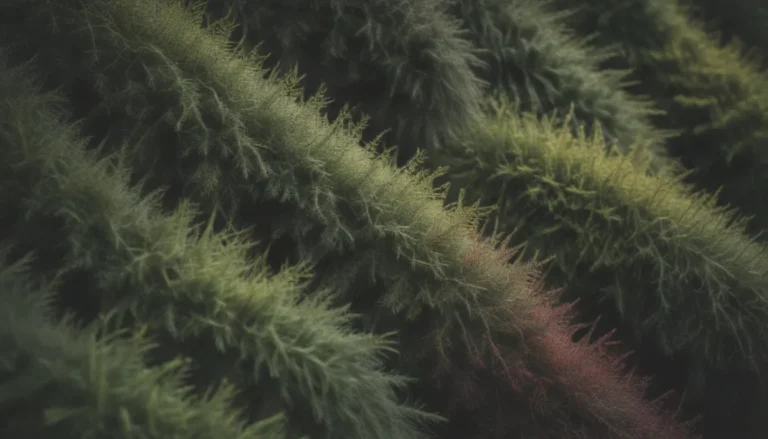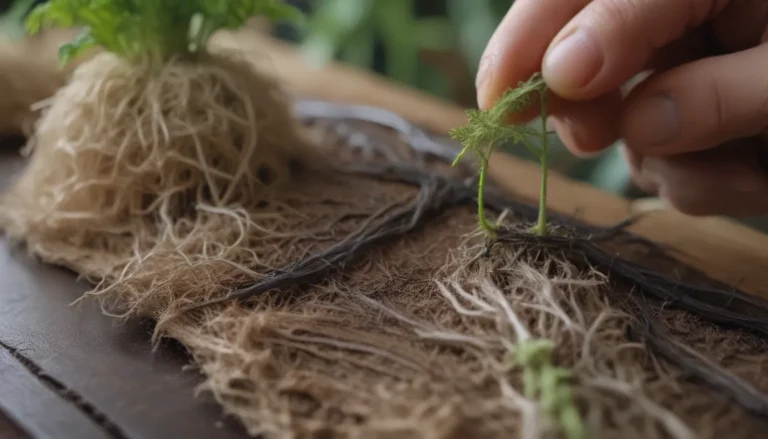Japanese Fern Tree Care Guide

If you’re looking to add a unique touch to your garden, the Japanese fern tree could be the perfect option. Despite its misleading name, this tropical tree with its graceful fern-like leaves can make a stunning addition to your outdoor space. In this comprehensive guide, we’ll dive into everything you need to know about growing and caring for Japanese fern trees.
What Is a Japanese Fern Tree?
Before we delve into the care instructions, let’s get a better understanding of what exactly a Japanese fern tree is. Contrary to its name, the Japanese fern tree is not from Japan, nor is it a true fern. Instead, it is a smaller tropical tree known for its tight, dense crown of elegant fern-like leaves that grow on a straight trunk. This tree thrives in tropical conditions where it can bask in direct sunlight, high humidity, and warmth.
Characteristics of a Japanese Fern Tree:
- Smaller tropical tree
- Dense crown of fern-like leaves
- Straight trunk
- Requires direct sunlight and high humidity
How to Care for Your Japanese Fern Tree
Taking care of a Japanese fern tree requires attention to specific conditions to ensure its optimal growth. Let’s explore the key care requirements to keep your tree healthy and thriving.
Light
The Japanese fern tree thrives in direct sunlight, so it’s essential to plant it in a location that receives at least eight hours of sun daily. In hotter or drier climates, partial shade during the afternoon can help protect the tree from extreme heat.
Soil
For your Japanese fern tree to flourish, it needs well-draining soil with a slightly alkaline pH. Whether you’re planting it in a pot or directly in the ground, ensure the soil is not too arid or waterlogged to prevent any issues with root health.
Water
Regular watering is crucial for the health of your fern tree, but avoid over-watering. Allow the soil to dry out between waterings, especially as the tree matures and becomes more drought-tolerant. Monitoring the soil moisture will help you strike the right balance for optimal growth.
Temperature and Humidity
Japanese fern trees prefer warm, tropical temperatures and cannot tolerate frost. Ensure the tree is shielded from temperatures below 50 to 55 degrees Fahrenheit to prevent any damage. Additionally, maintaining above-average humidity levels will benefit the tree’s overall health.
Fertilizer
Fertilize your Japanese fern tree three times a year in the fall, spring, and summer using a high-quality, slow-release fertilizer. Avoid cheap blends with heavy salts that can harm the tree’s roots. Proper fertilization will promote healthy growth and vibrant foliage.
Pruning Tips for Japanese Fern Trees
While the crown of a Japanese fern tree naturally grows into a globe shape and rarely requires pruning, you can trim lower branches for neatness and to expose more of the trunk. Deadhead the tree’s blooms if you want to prevent self-seeding. Additionally, removing volunteer seedlings can help maintain a tidy appearance in your garden.
Growing Japanese Fern Trees from Seed
If you want to propagate Japanese fern trees, you can do so using seeds from the tree’s fruits. Natural germination typically works well for these trees, as they can self-seed. Sow the seeds in the fall and expect them to germinate by early spring. This method allows you to expand your collection of Japanese fern trees without much hassle.
Potting and Repotting
Japanese fern trees can be grown indoors in containers, although they prefer outdoor settings where they have room to grow tall. When potting your tree, choose a slightly alkaline potting mixture in a well-draining container. Various sizes of containers are suitable, depending on the tree’s size, but a larger container may be needed as the tree matures and outgrows its current space.
Overwintering Tips for Japanese Fern Trees
Protect your Japanese fern tree from cold temperatures by avoiding exposure to anything below 50 to 55 degrees Fahrenheit. Use a plant blanket when necessary to shield the tree from chilly weather. In cold climates, consider bringing potted trees indoors during winter months to maintain the ideal growing conditions.
Common Issues with Japanese Fern Trees
While Japanese fern trees are relatively resistant to pests and diseases, a few problems may arise. Keep an eye out for the following issues and address them promptly:
- Yellowing Leaves: Too much sun, cold exposure, or root rot can cause the leaves to turn yellow. Monitor the tree’s environment and adjust as needed to prevent leaf discoloration.
- Rotted Base, Stunted Growth: Poorly draining soil can lead to root rot, impacting the tree’s growth. Amend the soil or check the roots for signs of decay to promote healthy development.
Growing Japanese Fern Trees in Different Climates
Although Japanese fern trees are not native to Florida, they thrive in the tropical climate of South Florida. With their low-maintenance nature and striking appearance, these trees have become a popular choice for gardeners looking to add a touch of exotic beauty to their outdoor spaces.
In conclusion, caring for a Japanese fern tree involves providing the right balance of sunlight, soil, water, and temperature to support its growth and vitality. By following the tips outlined in this guide, you can cultivate a thriving Japanese fern tree that adds a touch of elegance to your garden. Experiment with different methods of propagation and container sizes to accommodate the tree’s needs as it matures. With proper care and attention, your Japanese fern tree will flourish and become a focal point in your outdoor oasis.





